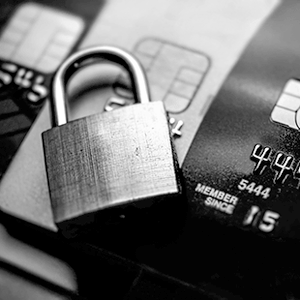Higher Education Cybersecurity
Protect your institution, faculty, and students even in a complex threat environment
Ongoing Cybersecurity Threats in Higher Education
Institutions in the higher education sector face a litany of complicated security challenges, primarily driven by the need to protect, support, and manage an expansive volume of digital assets that are constantly vulnerable to attack. IT and security teams at colleges and universities are tasked with protecting intellectual property, sensitive personal information like academic, health, and financial data, and a wide range of academic and research pursuits. They must also uphold the mission of higher education to welcome and operate in an open learning environment for students, faculty, and the communities and regions they serve.
In addition to the tremendous amount of data, networks, and assets they support, higher education organizations are also threatened constantly by threat actors who seek to gain access to devices and networks, and take advantage of an institution through phishing or other social engineering attacks. Organizations are also now having to manage and support access to the Cloud and embrace new thinking regarding higher education cybersecurity.
Increasing Regulatory Compliance
Because institutions are highly subject to attack, regulatory compliance has also significantly increased for colleges and universities. In fact, organizations in the higher education sector are continuing to see increased compliance requirements at the local, state, and national level. Organizations like the Higher Education Compliance Alliance (HECA) provide centralized content and information to help institutions with federal laws and regulations. Increasing regulatory compliance and demands on security teams can cause strain to keep up with not only cyberattacks, but also obligations to auditors at each level of government.
Colleges and universities today require sophisticated higher education cybersecurity solutions that can address the increasing requirements of keeping digital assets and data secure, mitigate the risk of threats, and fully adhere to compliance requirements. Only by securing these areas can organizations in the higher education sector successfully advance their mission of research and teaching, especially as the threat landscape continues to expand and grow more complex. With higher education cybersecurity solutions from Core Security, security professionals at any institution can isolate and prioritize their most critical vulnerability and access risks to more effectively address risks, ensure that defensive mechanisms are functioning properly, and prepare for mandated compliance audits.
Features
Ensure Ongoing Regulatory Compliance
With an incredible amount of sensitive data to protect, institutions in higher education operate under strict compliance guidelines for how personal information is used, accessed, and stored. Regulations like the Family Educational Rights and Privacy Act (FERPA) protect the privacy of student education records, and standards set from the Payment Card Industry (PCI) Security Standards Council, including the PCI Data Security Standard (PCI-DSS), ensure organizations in the higher education sector accept and use payment card information for account data protection. Colleges and universities must also account for who has access to critical information and conduct penetration testing, demonstrating they are compliant and have taken the steps necessary to protect the organization.
With an incredible amount of sensitive data to protect, institutions in higher education operate under strict compliance guidelines for how personal information is used, accessed, and stored. Regulations like the Family Educational Rights and Privacy Act (FERPA) protect the privacy of student education records, and standards set from the Payment Card Industry (PCI) Security Standards Council, including the PCI Data Security Standard (PCI-DSS), ensure organizations in the higher education sector accept and use payment card information for account data protection. Colleges and universities must also account for who has access to critical information and conduct penetration testing, demonstrating they are compliant and have taken the steps necessary to protect the organization.
Reduce the Threat Surface
Colleges and universities must support a complicated network of devices. Students and faculty regularly use their own personal devices—from mobile phones to tablets and personal computers, making it nearly impossible to ensure every digital asset is completely safe. Effective higher education cybersecurity requires that a bring-your-own-device (BYOD) policy and network threat detection solution be incorporated to limit the number of devices on the network and make sure they are actively monitored. Leveraging industry-leading IGA solutions also ensures that institutions can more effectively create and manage user accounts, roles, and access rights, streamline the provisioning process, and ensure continuous compliance to decrease identity related risk and reduce the overall threat surface.
Colleges and universities must support a complicated network of devices. Students and faculty regularly use their own personal devices—from mobile phones to tablets and personal computers, making it nearly impossible to ensure every digital asset is completely safe. Effective higher education cybersecurity requires that a bring-your-own-device (BYOD) policy and network threat detection solution be incorporated to limit the number of devices on the network and make sure they are actively monitored. Leveraging industry-leading IGA solutions also ensures that institutions can more effectively create and manage user accounts, roles, and access rights, streamline the provisioning process, and ensure continuous compliance to decrease identity related risk and reduce the overall threat surface.
Improve Operational Efficiencies
With the number of students, teachers, and faculty on a campus, it is difficult to ensure that every user is educated on best practices for higher education cybersecurity. However, with products like Core Impact, organizations in the higher education sector can test users at any time and determine how individuals react to potential threats, including phishing and other social engineering threats, and then educate them as required. Combine Cobalt Strike and Outflank Security Tooling that seamlessly integrate red teaming tools together to strengthen your red teaming efforts.
With the number of students, teachers, and faculty on a campus, it is difficult to ensure that every user is educated on best practices for higher education cybersecurity. However, with products like Core Impact, organizations in the higher education sector can test users at any time and determine how individuals react to potential threats, including phishing and other social engineering threats, and then educate them as required. Combine Cobalt Strike and Outflank Security Tooling that seamlessly integrate red teaming tools together to strengthen your red teaming efforts.
Reduce IT Costs
While higher education cybersecurity investment has increased in recent years, many colleges and universities may not have large budgets, so they often are reactive in their approach to find the right cybersecurity solution in response to a recent attack. If organizations are breached, they likely incur significant financial loss. Yet security teams are still strained to find the most up-to-date solutions that will support and protect their institution. Core Security solutions for higher education cybersecurity offer a holistic view of your network and monitor access risk, vulnerabilities, and devices—protecting more assets and decreasing dependency on multiple vendors.
While higher education cybersecurity investment has increased in recent years, many colleges and universities may not have large budgets, so they often are reactive in their approach to find the right cybersecurity solution in response to a recent attack. If organizations are breached, they likely incur significant financial loss. Yet security teams are still strained to find the most up-to-date solutions that will support and protect their institution. Core Security solutions for higher education cybersecurity offer a holistic view of your network and monitor access risk, vulnerabilities, and devices—protecting more assets and decreasing dependency on multiple vendors.

